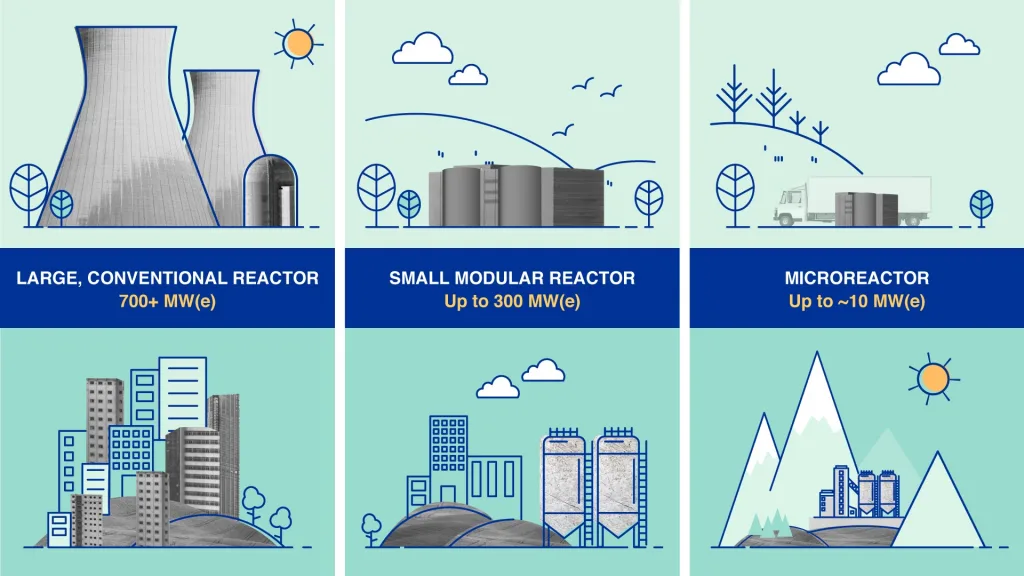Syllabus: GS3/ Energy and Infrastructure
Context
- India has announced plans to support the construction of up to 50 small nuclear reactors (SMRs) through public-private partnerships.
What are Small Modular Reactors (SMRs)?
- Small modular reactors (SMRs) are advanced nuclear reactors with a power capacity of up to 300 MW(e) per unit, roughly one-third the generating capacity of traditional nuclear power plants.
- Small – physically a fraction of the size of a conventional nuclear power reactor.
- Modular – making it possible for systems and components to be factory-assembled and transported as a unit to a location for installation.
- Reactors – harnessing nuclear fission to generate heat to produce energy.
- There are four four main types of SMR i.e., light water, high temperature gas, liquid metal, and molten salt.

Advantages of SMR
- Enhanced Safety Features: SMRs utilize passive safety mechanisms, such as natural convection and gravity-driven cooling, which help prevent overheating without relying on external power or human intervention.
- Flexibility: The modular nature of SMRs allows for incremental power additions, which is ideal for growing energy needs.
- Suitability for Remote and Off-Grid Areas: SMRs compact design makes them adaptable for smaller grid systems and applications like district heating and water desalination.
- Cost-Effective Construction: Prefabrication in controlled environments reduces on-site construction time and costs.
Concerns
- Regulatory Challenges: The current nuclear regulatory framework is primarily designed for large-scale reactors.
- The possibility of using SMRs to produce materials for nuclear warheads and co-locating them with military sites raises non-proliferation concerns.
- Legal Hurdles: India’s Civil Liability for Nuclear Damage Act, 2010, channels operators’ liability to equipment suppliers, deterring foreign investors due to financial risk concerns.
- High Initial Costs: Although SMRs are designed to be more cost-effective in the long run, the initial capital investment is significant.
- Waste Management: Handling and disposing of nuclear waste remains a significant challenge.
- Supply Chain and Manufacturing: Developing a robust supply chain for the components of SMRs and ensuring quality manufacturing processes are critical for their success.
India’s efforts
- According to a report by NITI Aayog, SMRs are seen as a critical technology for industrial decarbonization and energy transition.
- Research and development on SMRs are ongoing at the Bhabha Atomic Research Centre (BARC) in Mumbai.
- The Bharat Small Reactor (BSR) is a notable project under this initiative which aims to re-engineer existing reactors to incorporate additional safety features and enhance their efficiency.
- India and France have launched a cooperation program focused on SMRs and advanced modular reactors (AMRs).
Way Ahead
- The increased use of renewable energy coupled with the SMRs has the potential to fill energy gaps and contribute to a cleaner, more sustainable future.
- However, careful consideration and international cooperation will be necessary to ensure that this technology is developed and deployed responsibly.
Source: IE
Previous article
Hypersonic Missile
Next article
India’s Semiconductor Ecosystem